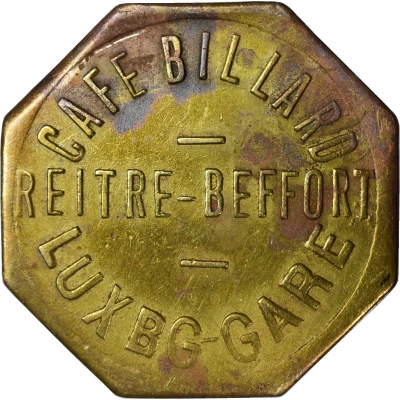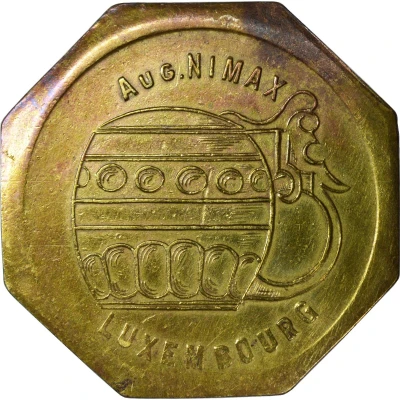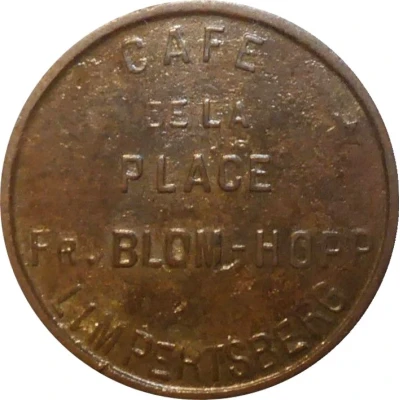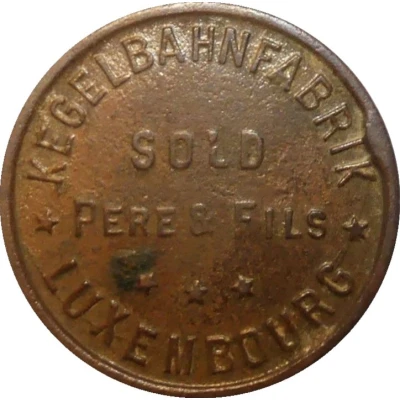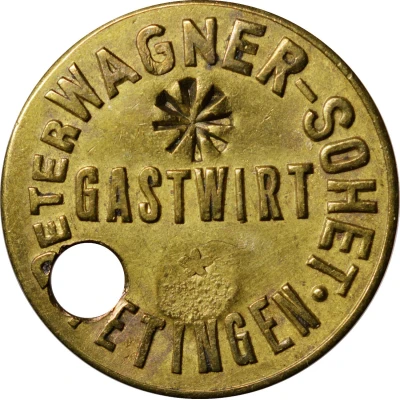


© smy77 (CC BY-NC-SA)
Tétange - Café Wagner-Sohet ND
| Brass | 4.75 g | 24.35 mm |
| Location | Luxembourg |
|---|---|
| Type | Business tokens › Restaurant, bar, cafe and hotel tokens |
| Years | 1925-1955 |
| Composition | Brass |
| Weight | 4.75 g |
| Diameter | 24.35 mm |
| Thickness | 1.55 mm |
| Shape | Round with a round hole |
| Technique | Milled |
| Orientation | Variable alignment ↺ |
| Demonetized | Yes |
| Updated | 2024-11-13 |
| Numista | N#373714 |
|---|---|
| Rarity index | 97% |
Reverse
Swan-shaped mug surrounded at the top by the name of the intermediary house and at the bottom by the locality. Counter-mark in the form of an eight-pointed asterisk at the bottom.
Script: Latin
Lettering:
AUG. NIMAX
LUXEMBOURG
Edge
Plain
Comment
Token for Café Wagner-Sohet, 1, rue de l'Eau, Tétange. At the beginning of 1925, Pierre Wagner and Victorine Sohet sold their house at 54, rue des légionnaires in Tétange, and moved 100 meters away to open the Café Wagner-Sohet on the corner of rue de l'Eau. Pierre Wagner died in 1949, but his widow continued to run the establishment, which was finally taken over by their son Charles Wagner [see MT 013] in July 1955.In 1949, the Wagner-Sohet couple had a first (lobed) token struck, but with the legend in French. [av\ CAFÉ ꟾ - ꟾ WAGNER-SOHET ꟾ TÉTANGE ꟾ - ꟾ TÉLÉPH. 51-07] (W# MT 017).
An early matrix of this token, however, contained a spelling error at the locality level:TÉTANGE was replaced by PÉTANGE (W# MT 016).
The token shown here is the German-language version of the token minted in 1949. Both the French and German versions were ordered through the intermediary house A. Nimax and minted by Fisch & Cie in Brussels. According to Weiller (p.451), the counter-mark was affixed after the 2nd World War and served to devalue them. This token and its counter-mark are listed by Weiller under number MT 015.
However, Raymond Weiller does not mention the side-hole variant. In view of the above and the fact that the hole hides the first letter of the locality [TETINGEN or PETINGEN], it would be easy to deduce that the mint made the same spelling error as on the French version, and that the side hole only served to hide this error.
Raymond Weiller mentions a fourth aluminum token, the description of which remains unknown to this day.
